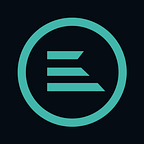Exploring the blockchain interoperability solution before its release in August
In one of our previous publication, we studied the problem of blockchain interoperability. Several approaches have been identified, the most popular of them are side chains and proxy tokens. Today we introduce our project that solve the problem of the blockchain interoperability.
EVEN Foundation has been developing a cross-chain platform since the end of 2017 and is currently on the verge of release. Very soon, in August, it will be possible to join the testnet. The developers have demonstrated the main features of the platform and have explained what are their achievements.
Two different ideas of interoperability
Take a look at the table below with the comparison of six projects solving the interoperability problem. The third row “Crosschain Technology” represents the essential difference between all of them. Half of them use side chains and another half proxy tokens with key sharding.
What is the best approach — side chains or proxy tokens, you would ask. Surprisingly, there is no answer to this question, since these technologies represent two different ideas of interoperability.
Cosmos, which is in the top-20 cryptocurrencies by market capitalization, uses side chains to solve interoperability problem. Generally, the idea of sidechain is like following: join our ecosystem and create your own blockchain (or side chain) which can transfer assets to the main chain, or even to other chains in our ecosystem. If you already have developed the blockchain project, you have to follow requirements to join the ecosystem.
At the 5th row of the table, External blockchain connection, you will find out that it is problematically to link existing blockchain to side chain ecosystems.
So, Cosmos interoperability solution is limited in usage.
The main use case is to launch an application-specific blockchain for private or public projects. Cosmos aims to become an “internet of blockchains”. This ambitious plan is unlikely to come true. I cannot imagine market leaders try to build into such ecosystems as Cosmos.
Projects that use a proxy token aim to connect any blockchain existing and future, including blockchain ecosystems. In EVEN proxy token is implemented through CIP protocol. Cross-Chain Interaction Protocol (CIP) is a protocol for cross-chain transactions, including transferring, exchanging, and storing digital assets. The unique algorithm developed by the EVEN Foundation team automatically secures every transaction. Its basic mechanism is the deposit, which ensures that network nodes will function correctly in accordance with the rules.
When a user deposits any digital asset to the network, CIP locks it in multisig wallet and issues the proxy token which represents this asset. With proxy tokens, all transactions are fast, commissionless and secure. To release the asset from multisig wallet EVEN implements key sharding which is decentralized storage of the key in the network. The consensus of ⅔ of key holders is required to perform any action with multisig account. When the asset is released back to the specific blockchain the proxy tokens disappears in EVEN Network.
The proxy token approach allows to connect existing blockchains and cover more use cases then side chains. For instance, EVEN Network will be used to implement decentralized exchanges and liquidity support, crosschain smart contracts and dApps, a lightening network for other blockchains.
The current state of the EVEN Network
The proxy token is a broader and more complex technology, which needs more time to enter the market. Leading projects have demonstrated their testnets or just limited connections to other blockchains. EVEN Network developers presented testnet which is currently able to perform transactions, smart contracts and operate multisig wallets using key sharding technology (part of CIP).
EVEN is an Open Source project and completely available on GitHub. Currently, most part of the documentation in the Russian language is published there. To launch the testnet you need to install network nodes. In EVEN network node includes several modules: user account, user wallet, IPFS connection interface, virtual machine, and others. Each client application (node) connected to EVEN network via the IPFS.
IPFS is a peer-to-peer distributed file system that connects all computing devices as a single system of files. In a sense the IPFS is similar to the World Wide Web. IPFS could be seen as a single BitTorrent swarm, exchanging objects within one Git repository. In other words, IPFS provides a high-throughput, content-addressed block storage model, with content-addressed hyperlinks. A local file may be added to IPFS file system, which makes it accessible to the whole world. Files are identified by their multihashes, which makes caching easier. They are distributed through a protocol based on BitTorrent protocol. Users browsing through content help other network users access content.
After testnet is deployed you can send to the network the number of commands and create smart contracts in Tengo language. The example is the crosschain exchange between Litecoin and Bitcoin networks.
The network is already impressively fast: transaction confirmation time is 3.5 seconds and throughput is more than 200 K transactions per second. EVEN is based on light Rated DAG algorithm which allows running nodes on smartphone and conducting transactions at a high speed, while also allowing for easy network scalability.
EVEN team is going to release the public testnet by the end of the summer so you can try it very soon. The team invites developers to explore documentation, install nodes, run smart contracts and estimate platform capabilities for their needs. By the end of the year, the first production version of EVEN Network will be introduced.
